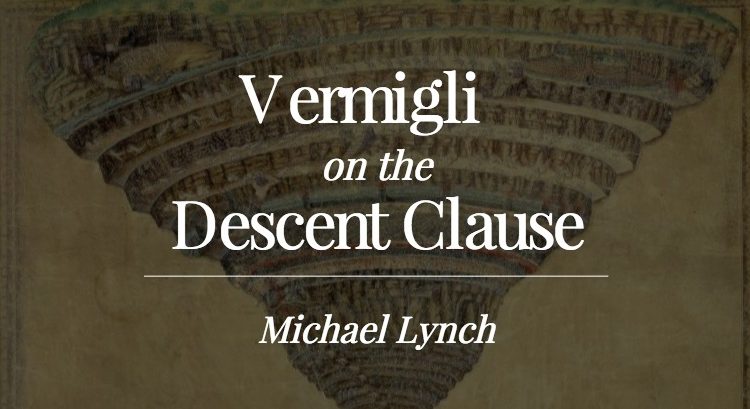
Introduction
If you are like me and many other Christians throughout ecclesiastical history, you, no doubt, have questioned the meaning of the famous (or infamous) descent clause in the Apostles’ Creed: “He [that is, Jesus Christ] descended into hell.” Not too long ago, a fairly well-known conservative American Presbyterian actually admitted to excluding the line altogether when it is recited among his congregation. Many fine essays and books have been written in defense of the clause. In this post, I want to make a couple observations in further support of its inclusion in the Creed.
The Idea of Hades is Not Foreign to the Greco-Roman World
First, it should be observed that the idea of an abode of the dead in which the souls of both the righteous and unrighteous dwell is not foreign to the Greco-Roman world, the context of the New Testament. Book 11 of Homer’s Odyssey famously recounts Odysseus’ journey to the underworld where the shadows of the dead reside. Moreover, book 6 of Virgil’s Aeneid describes in detail the underworld of the dead. In Virgil’s description, there is clearly both a place of judgement, Tartarus, where the unrighteous are punished, and a place of blessing, the Blessed Groves, where the righteous live in peace. My purpose in recounting these scenes is not to say that they are accurate depictions of reality, but simply to note how this idea was imagined in well-known Greek and Roman mythology.
In his exposition of the Apostles’ Creed, published in Italian because it was intended for the average Italian Christian, Peter Martyr Vermigli gives a very similar picture of Christ’s descent into hell. Of course, it should be noted that the Italian (following the Latin) uses the word “inferno,” which is probably better translated as “lower regions” rather than hell. Regardless, note how Vermigli describes this descent clause. After Christ’s death, although Christ’s flesh stayed in the tomb:
When the soul had departed from the body it did not stay idle but descended into the lower regions. This means nothing else than that it experienced the same condition as other souls separated from their bodies – association with the saints, or with the company of the condemned. Both of these groups were confronted with the presence of Christ’s soul.
Vermigli Thinks Hades Exists
Moreover, Vermigli appeals to Jesus’ own discussion of the Rich Man and Lazarus as found in Luke’s Gospel as support for his reading. Apparently, Vermigli thinks that this place actually exists (though with a non-corporeal existence) and Jesus actually went to this place:
The believing, who (as Christ said in Luke’s Gospel, when speaking of the miserable rich-man and blessed Lazarus) were in a quiet place appropriately called Abraham’s bosom … The spirits condemned to eternal perdition also encountered the soul of Christ, because, as Peter wrote, “He preached to them.” We may interpret this to mean that he rebuked them for the obstinacy and incredulity they had shown to the words and divine promptings addressed to them by God.
Although this view of the clause has often been called the Lutheran view, Vermigli stands in a line of other Reformed theologians who’ve argued that Christ’s soul actually went to a place inhabited with the souls of the dead. Indeed, Christ greets the faithful, giving them the “greatest consolation,” while the unbelieving souls of the dead are rebuked.
Conclusion
Personally, I find Vermigli’s reading of the Creed convincing. It makes good sense of the Rich Man and Lazarus story. Moreover, it fits well within the context of the creed. Every other description of Jesus in the second section of the Creed refers to historic events with localities. While Scripture is hardly lucid regarding the intermediate state of those separated from their bodies, Christ’s soul was surely somewhere (albeit, non-corporally). The Creed appears to tell us that while his body was buried in the grave, Christ’s soul descended to the abode of the dead before being united to the physical body, raised from the dead, ascending, and sitting at the right hand of the Father. Finally, it is fitting that the apostolic confession of Christ’s descent to the abode of the dead, pictured by the Lazarus narrative, is strikingly similar to the Greco-Roman conception.
While Vermigli’s exposition of the descent clause is not the final word on the topic, his exposition is, at least, worth considering.
Michael Lynch is a PhD candidate at Calvin Theological Seminary and teaches Latin and Greek at Tall Oaks Classical School in Delaware.

